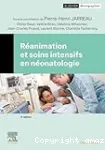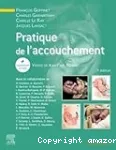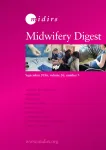| Titre : | Obstetric neonatal brachial plexus and facial nerve injuries: A 17 years single tertiary maternity hospital experience. (2020) |
| Auteurs : | Andreas Rehm ; Prakash Promod ; Amanda Ogilvy-Stuart |
| Type de document : | Article : texte imprimé |
| Dans : | Midirs. Midwifery Digest (Vol. 30, n° 1, march 2020) |
| Article en page(s) : | p. 95-101 |
| Langues: | Anglais |
| Sujets : |
Paramédical (MeSH) Césarienne ; Extraction obstétricale ; Facteurs de risque ; Forceps obstétrical ; Lésions traumatiques du nerf facial ; Neuropathies du plexus brachial ; Nouveau-né ; Paralysie obstétricale ; Traumatismes néonatals ; Version foetale |
| Résumé : |
Objectives : To establish the incidence of obstetric neonatal brachial plexus and facial nerve injuries in a tertiary maternity hospital in the United Kingdom and to identify associated risk factors with an emphasis on the time of delivery.
Methods : From our hospital electronic data bases we identified all live births born between 2000 and 2016 and those neonates who sustained a nerve injury during delivery. We performed a logistic regression analysis linking "facial nerve injury" and "brachial plexus injury" with variables for which we had complete cohort data including "breech", "gestation", "sex", "birthweight", "day of week", "time of delivery", "method of delivery", "singleton/multiple deliveries" and "number of deliveries per day". Significance level was set at 5%. Results : We identified 87,461 live births of which 29 had sustained a facial nerve and 45 a brachial plexus injury. Logistic regression showed a significant positive association between "facial nerve injury" and "forceps delivery" (95% CI: 25-1398), "Ventouse delivery" (95% CI: 1.7-207) and "emergency Caesarean section" (95% CI: 1.7-148) and between "brachial plexus injury "and "birthweight" (95% CI: 1.001-1.003), "forceps delivery" (95% CI: 3.4-14) and "Ventouse delivery" (95% CI: 2.5-13). There was no increased risk for weekend and out of hours deliveries. All babies with a nerve injury made a full recovery. Conclusions : Our obstetric neonatal nerve injury rate (0.085%) was low with our brachial plexus injury rate (0.051%) being about one third of a historical rate from Ireland (0.15%) and half of the rate recently reported from the United States (0.12%) which could be linked to our staff dealing with many high risk pregnancies. Neonatal birth injury data should be included as a clinical safety marker for delivery units. |
Exemplaires (1)
| Localisation | Section | Support | Cote de rangement | Statut | Disponibilité |
|---|---|---|---|---|---|
| Bibliothèque Paramédicale | Périodiques | Périodique | MID.DIG 20-1 | Empruntable | Disponible |









